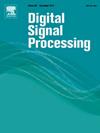Retargeted broad learning systems for image classification
IF 2.9
3区 工程技术
Q2 ENGINEERING, ELECTRICAL & ELECTRONIC
引用次数: 0
Abstract
The Broad Learning System (BLS) is recognized for its adept balance between efficiency and accuracy, displaying notable performance in image classification tasks owing to its streamlined network architecture and effective learning methodology. However, it faces significant challenges due to two prominent deficiencies that notably impede its learning efficacy. Firstly, the rigid binary labeling strategy inherent in BLS-based models imposes constraints on the model's adaptability. Additionally, the resultant broad features often exhibit redundancy, posing a risk of incorporating extraneous features. To address these issues, this article proposes three refined BLS-based models. Initially, a retargeting methodology is integrated into the standard BLS framework to alleviate constraints on regression targets, introducing the -based retargeted BLS (L2ReBLS) model. Subsequently, to mitigate the adverse effects of redundant features, the regularizer is adopted as a replacement for the Frobenius norm in feature selection, resulting in the L21ReBLS model. Furthermore, the projection matrix of BLS is concurrently constrained with and regularization method simultaneously. Efficient iterative optimization methodologies via the alternating direction method of multipliers are devised for the purpose of solving the proposed approaches. Ultimately, comprehensive experiments conducted on diverse image databases are to highlight the superior performance of our proposed approaches in comparison to other state-of-the-art classification algorithms.
求助全文
约1分钟内获得全文
求助全文
来源期刊

Digital Signal Processing
工程技术-工程:电子与电气
CiteScore
5.30
自引率
17.20%
发文量
435
审稿时长
66 days
期刊介绍:
Digital Signal Processing: A Review Journal is one of the oldest and most established journals in the field of signal processing yet it aims to be the most innovative. The Journal invites top quality research articles at the frontiers of research in all aspects of signal processing. Our objective is to provide a platform for the publication of ground-breaking research in signal processing with both academic and industrial appeal.
The journal has a special emphasis on statistical signal processing methodology such as Bayesian signal processing, and encourages articles on emerging applications of signal processing such as:
• big data• machine learning• internet of things• information security• systems biology and computational biology,• financial time series analysis,• autonomous vehicles,• quantum computing,• neuromorphic engineering,• human-computer interaction and intelligent user interfaces,• environmental signal processing,• geophysical signal processing including seismic signal processing,• chemioinformatics and bioinformatics,• audio, visual and performance arts,• disaster management and prevention,• renewable energy,
 求助内容:
求助内容: 应助结果提醒方式:
应助结果提醒方式:


